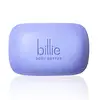What's inside
What's inside
 Key Ingredients
Key Ingredients

 Benefits
Benefits

 Concerns
Concerns

 Ingredients Side-by-side
Ingredients Side-by-side

Sodium Palmate
CleansingSodium Palm Kernelate
CleansingWater
Skin ConditioningGlycerin
HumectantSodium Gluconate
Skin ConditioningCellulose Acetate
Hydrogenated Castor Oil
EmollientButyrospermum Parkii Butter
Skin ConditioningParfum
MaskingAloe Barbadensis Leaf Juice
Skin ConditioningSimmondsia Chinensis Seed Oil
EmollientJojoba Esters
EmollientOlea Europaea Fruit Oil
MaskingPalm Acid
CleansingSodium Chloride
MaskingPalm Kernel Acid
CleansingRicinus Communis Seed Oil
MaskingGeraniol
PerfumingKaolin
AbrasiveMaltodextrin
AbsorbentCitronellol
PerfumingLinalool
PerfumingCI 77510
Cosmetic ColorantCI 77891
Cosmetic ColorantCI 77007
Cosmetic ColorantSodium Palmate, Sodium Palm Kernelate, Water, Glycerin, Sodium Gluconate, Cellulose Acetate, Hydrogenated Castor Oil, Butyrospermum Parkii Butter, Parfum, Aloe Barbadensis Leaf Juice, Simmondsia Chinensis Seed Oil, Jojoba Esters, Olea Europaea Fruit Oil, Palm Acid, Sodium Chloride, Palm Kernel Acid, Ricinus Communis Seed Oil, Geraniol, Kaolin, Maltodextrin, Citronellol, Linalool, CI 77510, CI 77891, CI 77007
Glycerin
HumectantSodium Cocoyl Isethionate
CleansingSorbitol
HumectantPropylene Glycol
HumectantTheobroma Cacao Seed Butter
EmollientRosa Damascena Callus
AntimicrobialStearic Acid
CleansingMyristic Acid
CleansingSodium Laureth Sulfate
CleansingJojoba Esters
EmollientDisodium Lauroamphodiacetate
CleansingLeuconostoc/Radish Root Ferment Filtrate
AntimicrobialSodium Stearate
CleansingSodium Myristate
CleansingSodium Laurate
CleansingWater
Skin ConditioningBeta-Glucan
Skin ConditioningAllantoin
Skin ConditioningFragaria Vesca Fruit Extract
AstringentVaccinium Myrtillus Seed Oil
Skin ConditioningTitanium Dioxide
Cosmetic ColorantMica
Cosmetic ColorantCI 77492
Cosmetic ColorantCI 77742
Cosmetic ColorantParfum
MaskingGlycerin, Sodium Cocoyl Isethionate, Sorbitol, Propylene Glycol, Theobroma Cacao Seed Butter, Rosa Damascena Callus, Stearic Acid, Myristic Acid, Sodium Laureth Sulfate, Jojoba Esters, Disodium Lauroamphodiacetate, Leuconostoc/Radish Root Ferment Filtrate, Sodium Stearate, Sodium Myristate, Sodium Laurate, Water, Beta-Glucan, Allantoin, Fragaria Vesca Fruit Extract, Vaccinium Myrtillus Seed Oil, Titanium Dioxide, Mica, CI 77492, CI 77742, Parfum
 Reviews
Reviews

Ingredients Explained
These ingredients are found in both products.
Ingredients higher up in an ingredient list are typically present in a larger amount.
Glycerin is already naturally found in your skin. It helps moisturize and protect your skin.
A study from 2016 found glycerin to be more effective as a humectant than AHAs and hyaluronic acid.
As a humectant, it helps the skin stay hydrated by pulling moisture to your skin. The low molecular weight of glycerin allows it to pull moisture into the deeper layers of your skin.
Hydrated skin improves your skin barrier; Your skin barrier helps protect against irritants and bacteria.
Glycerin has also been found to have antimicrobial and antiviral properties. Due to these properties, glycerin is often used in wound and burn treatments.
In cosmetics, glycerin is usually derived from plants such as soybean or palm. However, it can also be sourced from animals, such as tallow or animal fat.
This ingredient is organic, colorless, odorless, and non-toxic.
Glycerin is the name for this ingredient in American English. British English uses Glycerol/Glycerine.
Learn more about GlycerinJojoba Esters is a wax created from Jojoba oil. It is an emollient and film-forming ingredient. In bead form, it is an exfoliator.
This ingredient has high oxidative stability, meaning it doesn't break down when exposed to oxygen.
Its similarity to our skin's natural oils makes it a great emollient. Emollients help soften and soothe our skin by creating a barrier on top. This barrier helps trap moisture in, keeping skin hydrated.
It is created using either the hydrogenation or transesterification processes on jojoba oil.
Learn more about Jojoba EstersParfum is a catch-all term for an ingredient or more that is used to give a scent to products.
Also called "fragrance", this ingredient can be a blend of hundreds of chemicals or plant oils. This means every product with "fragrance" or "parfum" in the ingredients list is a different mixture.
For instance, Habanolide is a proprietary trade name for a specific aroma chemical. When used as a fragrance ingredient in cosmetics, most aroma chemicals fall under the broad labeling category of “FRAGRANCE” or “PARFUM” according to EU and US regulations.
The term 'parfum' or 'fragrance' is not regulated in many countries. In many cases, it is up to the brand to define this term.
For instance, many brands choose to label themselves as "fragrance-free" because they are not using synthetic fragrances. However, their products may still contain ingredients such as essential oils that are considered a fragrance by INCI standards.
One example is Calendula flower extract. Calendula is an essential oil that still imparts a scent or 'fragrance'.
Depending on the blend, the ingredients in the mixture can cause allergies and sensitivities on the skin. Some ingredients that are known EU allergens include linalool and citronellol.
Parfum can also be used to mask or cover an unpleasant scent.
The bottom line is: not all fragrances/parfum/ingredients are created equally. If you are worried about fragrances, we recommend taking a closer look at an ingredient. And of course, we always recommend speaking with a professional.
Learn more about ParfumWater. It's the most common cosmetic ingredient of all. You'll usually see it at the top of ingredient lists, meaning that it makes up the largest part of the product.
So why is it so popular? Water most often acts as a solvent - this means that it helps dissolve other ingredients into the formulation.
You'll also recognize water as that liquid we all need to stay alive. If you see this, drink a glass of water. Stay hydrated!
Learn more about Water